and the distribution of digital products.
Everything You Thought Was Sci-Fi? The European Space Agency Is Building It
Space flights turned out to be necessary for people not so much for knowledge as for answers to eternal questions: “Where did we come from, where are we going, and are we alone in the universe?” The exploration and colonization of space is the basic instinct of living beings who are pioneers. The search for new places to live. An innate need to explore new places. Throughout history, human migration has reflected a deep need to explore the world in search of new resources and to colonize new territories. Adapting to different living conditions, people felt an acute need to discover something new, risking their lives in the endless and unexplored oceans and in the unknown wilderness. Where would we be today without the great explorers of the past?
Science fiction allows us to understand why people have always been fascinated by the vastness of space. After all, works of fiction reflect people's ideals, fears, and concerns like a mirror. Stories about space conquerors highlight people's lifestyles and behavior and reveal the negative aspects of society.
Science fiction writers predicted the advent of satellites, space flights, and the moon landing long before it became possible. Early science fiction authors described space concepts and spacecraft based on the limited scientific and technical knowledge available at the time. Although early works tended to contain inaccuracies, many of the predictions came true and turned into technology and engineering.
Even before the first airplane took off and the first space rocket was launched, writers were already traveling through space:
- In 160, Lucian of Samosata, in his “True History”, described journeys into space, to the moon, and to the sun. He recounted the colonization of Venus, alien life forms, and interplanetary wars.
- The 10th-century Japanese tale (monogatari) “The Tale of the Bamboo Cutter” describes a war on the Moon. An old man raised a girl who turned out to be the lunar princess Kaguya.
- In 1610, the telescope was invented in Europe, and astronomers were able to “travel” in space. They recorded their new impressions and new images. Just five years later (sic!), in 1615, astronomer Johannes Kepler published the science fiction novel Somnium, in which he described a journey to the moon. Kepler suggested that an observer on the moon would see the same movement of the planets as an observer on Earth could see the movement of the moon, as described in Copernicus' theory. In the same novel, he stated that the Earth's atmosphere is limited and does not extend into the infinity of the universe.
- In 1638, Francis Godwin published “The Man in the Moone”.
- In 1657, Cyrano de Bergerac wrote “Comical History of the States and Empires of the Moon”. Bergerac expressed the ideas that the universe is infinite, that the Earth revolves around the Sun, and that the Moon revolves around the Earth.
- Bernard le Bovier de Fontenelle, “Conversations on the Plurality of Worlds”. The main character and heroine are walking in a night garden. He explains to her the heliocentric system of the world, important information about the Earth, the Moon, the planets, and fixed stars as suns at the center of their own planetary systems, and also reflects on the possibility of extraterrestrial life.
- Marie-Anne de Roumier-Robert, “The Voyages of Lord Seaton to the Seven Planets”.
- In his 1865 book From the Earth to the Moon: A Direct Route in 97 Hours, 20 Minutes, Jules Verne came up with the idea of sending a projectile with people inside to the moon. He invented a spaceship that could enter orbit. In this work, the first colony in space was created.
Science fiction in literature became an integral part of space exploration and laid the foundation for future space activities. Some well-known examples show the inextricable link between literature and technical implementation:
- 1865: launchers for supersonic projectiles;
- 1869: retro rockets;
- In 1895, K.E. Tsiolkovsky proposed the idea of a space elevator. In the 1960s, the idea was developed by Soviet engineer Y.N. Artsutanov. At the beginning of the 21st century, there have been significant achievements in this area.
- In 1923, K.E. Tsiolkovsky described the idea of direct use of solar energy. In 2020, the Chinese National Space Agency launched the first working prototypes of solar energy satellites into space.
- In 1928, in the novel “Crashing Suns” from the “Interstellar Patrol” series, Hamilton described holography. In the work, he called it “telestereo”. The development of optical holography became possible after the invention of the laser in 1960.
- 1928: planetary landing devices;
- 1929: aerodynamic stability stabilizers for rockets;
- 1929: cluster rocket boosters;
- 1929: spacesuits and life support systems in space;
- 1945: orbital space station;
- 1945: satellites in geostationary orbit for communications;
- 1920, 1951, 1963: solar sails;
- 1954: multiple rocket fuel tanks;
- 1954: crew modules for re-entry into the atmosphere.
- In the 1970s, one of the engineers at the US National Aeronautics and Space Administration (NASA) analyzed the description of a spacecraft given by an eyewitness to the phenomenon in the book of the prophet Ezekiel. The analysis showed that such a spherical spacecraft was entirely possible. The only limitations were the materials and technologies available to the space industry in the 1970s.
- At the beginning of the 21st century, NASA specialists began serious research into engines capable of operating at superluminal speeds. This idea is well represented in the science fiction television series Star Trek: Enterprise. In the 1960s, the idea of faster-than-light speeds seemed incredible. However, today, models of space curvature no longer seem so absurd.
The examples given demonstrate how, over the past hundred years, writers have helped space experts visualize ideas, form plans and projects, and give shape to space technology. Dreams have become reality, miracles have become everyday occurrences. At the same time, fantastic ideas cannot be immediately verified. It is difficult to accurately determine the possibility of implementation. Usually, the development and implementation of space technology takes a long time. Nevertheless, science fiction is useful for stimulating the imagination, formulating ideas, concepts, and scenarios for the use of technology. This is what the experts at the European Space Agency do.
Science fiction at the ESA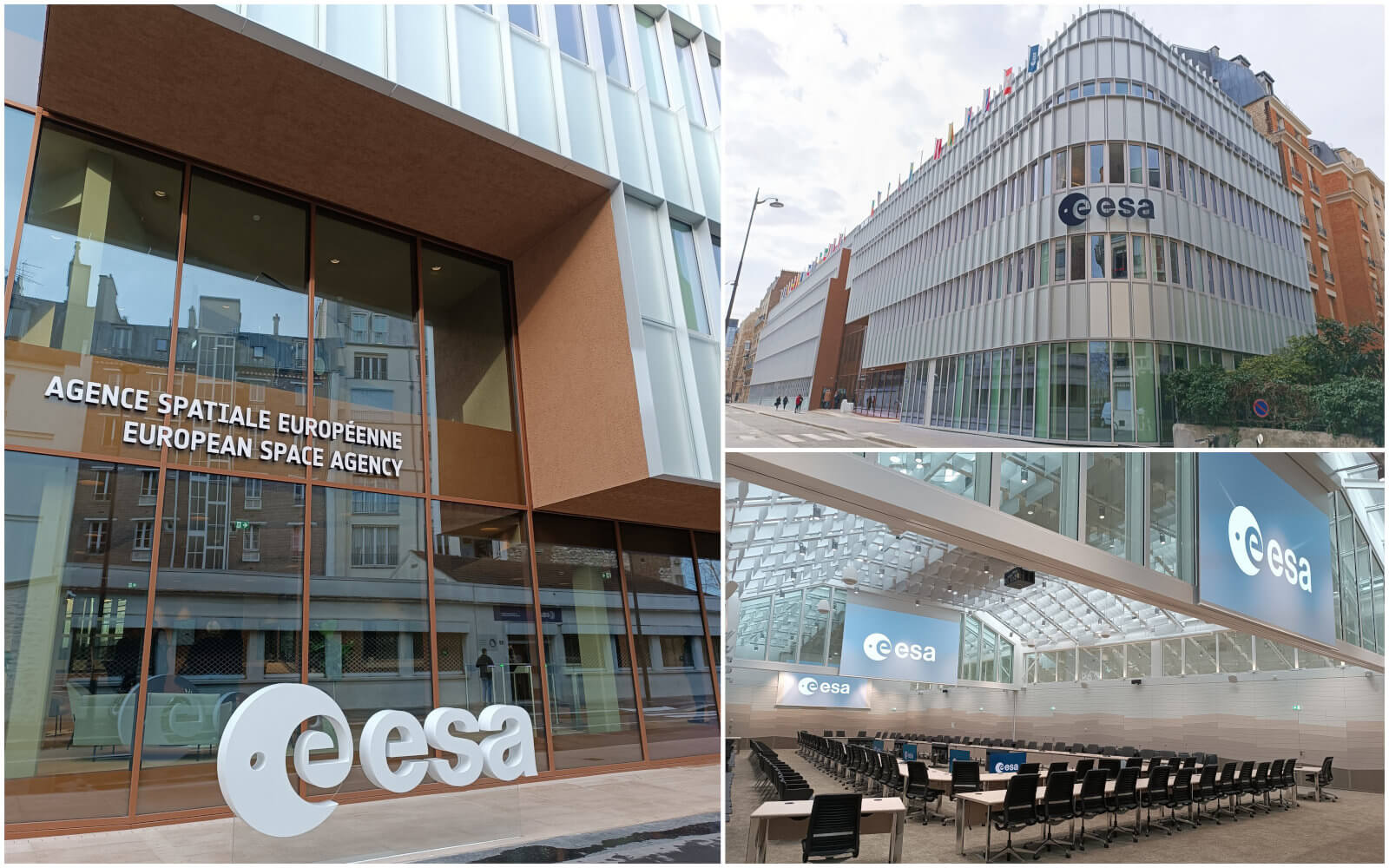
The European Space Agency (ESA) understands that science fiction literature contains innovative technological ideas that play an important role in science and technology, even if they cannot be immediately implemented. According to the ESA, the usefulness of science fiction for the development of the aerospace industry lies in the following:
- Science fiction has a philosophical orientation. It is a way to reflect on how people could live, what they want and do not want. Science fiction sets the stage for a dialogue between representatives of art, science, industry, and the general public.
- Science fiction has political and social significance. Works inspire representatives of all social and cultural strata. Enthusiasm for science fiction transcends religions and national borders. This lends legitimacy to space programs and is a compelling reason for conducting space missions.
- Science fiction reflects the current technological climate. The success of its implementation depends on how well the concept is understood by society at the present time. Collective imagination transforms the concept into technology.
The ESA does not have a permanent program related to the conceptualization of science fiction. However, the agency periodically holds various events directly related to science fiction. Let's take a look at some of these events.
ESA, 2001-2002. Innovative Technologies from Science Fiction (ITSF)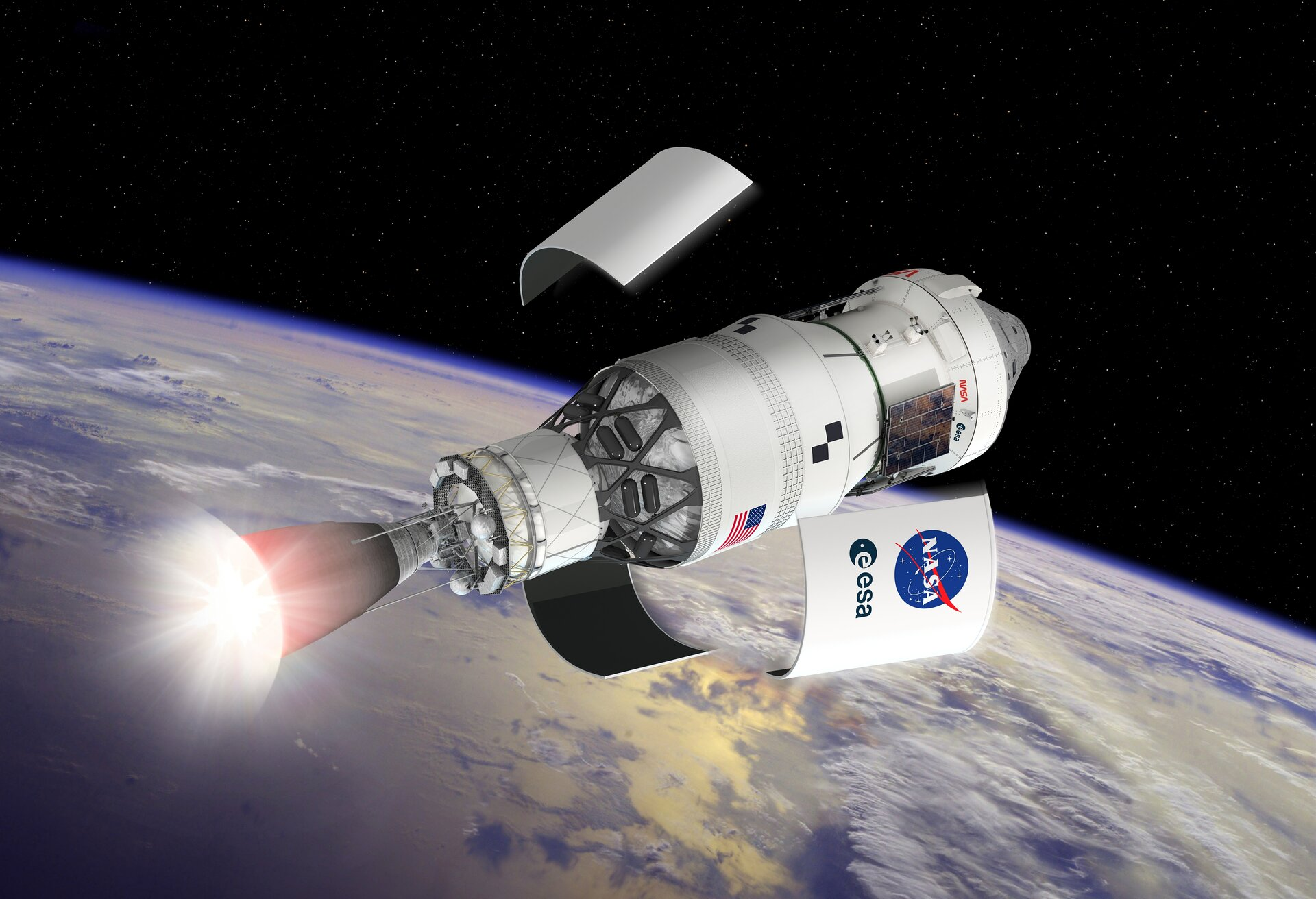
Between 2001 and 2002, the ESA conducted a study entitled “Innovative Technologies from Science Fiction (ITSF)”. The aim of this study was to identify and evaluate innovative concepts in contemporary science fiction that could be developed into technologies applicable to the space industry.
The study involved searching for original ideas that could potentially be used for:
- Long-term development of the European space industry;
- Predicting the future development of space technology and its impact on European society.
Exciting, isnt it?
Organization of the studyThe research was organized by highly qualified and experienced scientists and engineers working not only at ESA, but also at European universities and aerospace companies.
The project managers applied the following organizational solutions:
- A wiki-style website was created to collect initial ideas. The site contained:
- project objectives;
- a list of contact persons;
- a selection of links to science fiction works;
- necessary reference information.
- A specialized form with a questionnaire was created to formalize the ideas. The form helped researchers to more fully reflect the ideas they had found.
- A forum was created to discuss ideas. Participants discussed the plausibility, feasibility, and practicality of the proposed ideas.
This allowed various groups of researchers, as well as specialists in the space industry, to interact with each other.
More than two hundred participants registered for the project: scientists, engineers, science fiction writers, and independent researchers.
Research methodologyFrom the outset, the organizers understood that the approach to the research was rather superficial and preliminary. The sheer volume of science fiction works made it impossible to cover all literature. The review was conducted only on English-language science fiction literature and only for the period of the 20th century, cutting off a huge layer of non-English-language literature from more than two thousand years of science fiction history. In addition, there were time and financial constraints on the project.
Participants in the “Innovative Technologies from Science Fiction (ITSF)” project were asked to:
- Analyze works of fiction over a period of a hundred years.
- Identify the innovative concepts described.
- Assess the practicality of the identified concepts.
- Assess the potential of each idea. Compile a rating reflecting the priorities for further research.
The organizers did not impose their own list of literature. Researchers selected and analyzed works of science fiction at their own discretion.
The analysis of science fiction works allowed us to identify a variety of concepts. Further, it was assessed whether any of these concepts could have the potential for feasibility study. Analysts were interested in the question: is it possible to realize a science fiction concept within the framework of modern knowledge, methods, technologies, materials?
The identified concepts were categorized as follows:
- known concepts of the past:
- impossible to implement in the past, near and medium term future;
- ineffective - known, tested in the past and present;
- impossible in the past, but probably possible in the present or near future;
- the newest (previously unknown) concepts of the present:
- impossible to apply in the near and medium term future;
- requiring testing for effectiveness;
- probably possible in the present or near future.
Concepts impossible to implement were discarded. What remained was handed over to aerospace research centers with which separate contracts were signed. A bibliography of science fiction works containing the identified ideas was provided to assist the experts. The subcontractors conducted their own analysis of the proposals and submitted expert reports to ESA.
Result of the studyIn the end, 250 concepts remained. They were categorized, a taxonomy was constructed and promising directions were identified in the following areas of space activities:
- propulsion: solar sail, ion, thermonuclear, warp, pellet engines, personal space transportation;
- space colonization: terraforming;
- space energy;
- space computerization: mobile computers, virtual and augmented reality devices;
- space communications: instant communications, orbital towers;
- roboticization of space;
- cyborgs: augmentation of astronauts' defenses;
- space launch systems: space elevator, orbital loops;
- resource extraction in space;
- new materials for the creation of space equipment.
The concepts with a positive expert evaluation were included in the European Space Technologies Catalogue and in Dossier 0.
ESA, 2005. International Science Fiction Competition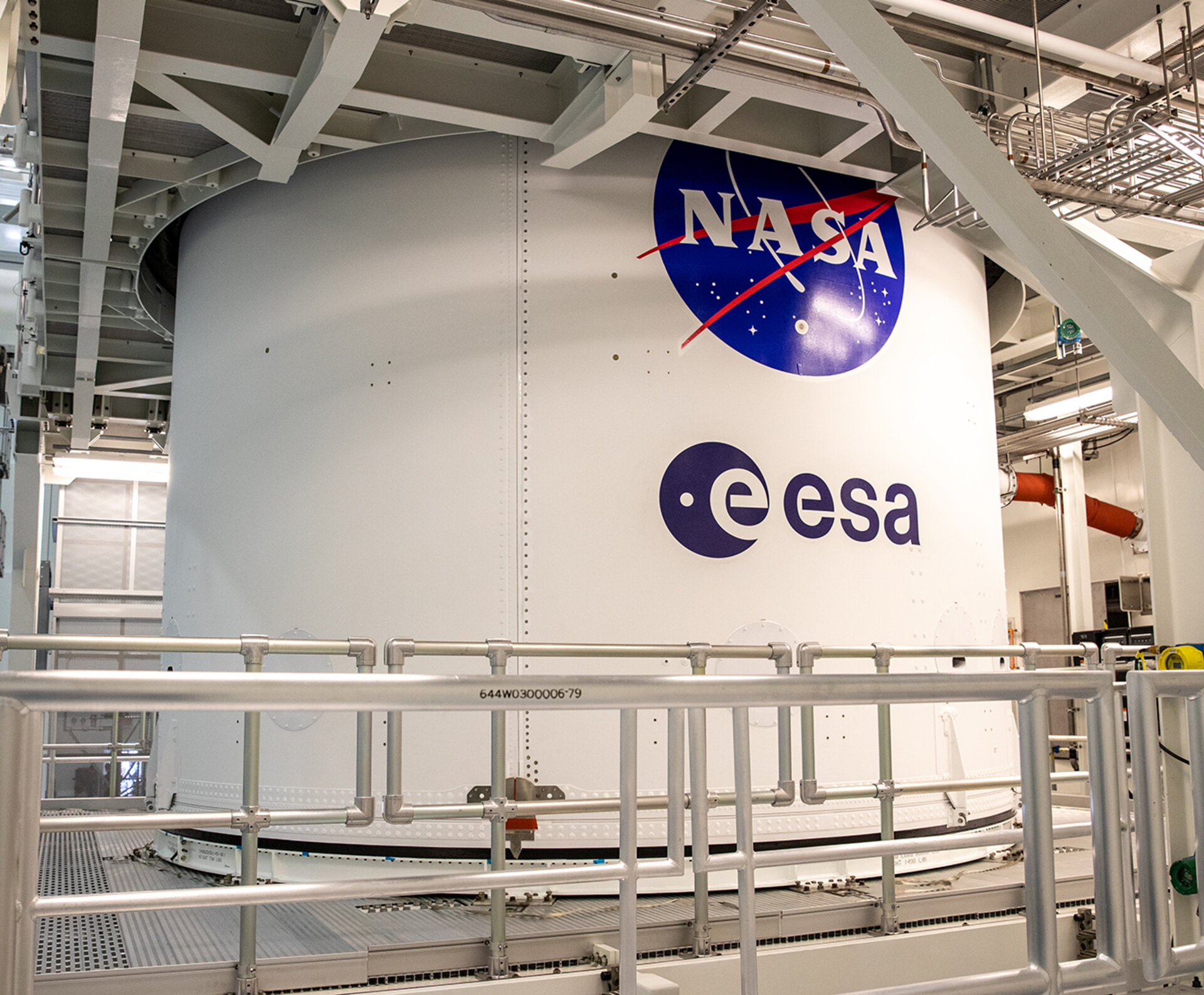
In 2005, the European Space Agency's Technology Transfer and Promotion Office announced an international science fiction competition.
The objectives of the literary competition are:
- to encourage young, non-professional authors to write science fiction;
- to show something new in space missions in the works.
The competition was approved by renowned science fiction writers Arthur C. Clarke and Ray Bradbury. They also agreed to head the jury for this literary event. The international jury included experts from the European Space Agency (ESA).
The jury evaluated the submitted works according to the following criteria:
- technology — convincing application of technology in space missions;
- imagination — innovative ideas and the author's ability to think outside the box.
The jury did not accept for consideration works:
- whose sole theme was the presentation of technology, unrelated to society;
- with obvious scientific or technical errors, with inconsistencies in boundary conditions;
- with descriptions of dystopias and apocalypses that led to migration from an overpopulated and uninhabitable Earth.
The competition received 120 entries from 36 countries. The largest number of entries came from the United States. The topics of the essays submitted covered:
- star wars;
- space travel;
- colonization and terraforming of planets;
- space engines, hyperdrives, techniques for reaching Earth orbit, space elevators, solar sails;
- medical aspects of long-term stays in space;
- materials, nanotechnology;
- communication in space;
- human relations in long-term space missions.
At the end of the competition, the ESA published a collection of science fiction stories, which included all the works selected by the jury.
ESA, 2022–2024. New Ideas to Make XR a Reality
To help readers better understand what the European Space Agency (ESA) projects are about, I will provide a couple of definitions related to human perception of the environment.
Extended reality is a general term for augmented reality, mixed reality, and virtual reality. The technology is designed to improve the user's perception of the environment. It combines visual data from reality with a digital model. It provides the user with the opportunity to immerse themselves in extended and virtual environments and gain individual experience.
Selection of science fiction ideasIn 2022–2024, the ESA held seven events to select science fiction ideas applicable to space exploration. For example, in 2022, the ESA held a competition called “New ideas to make XR a reality”. The theme of extended reality was chosen with the aim of creating a dynamic space ecosystem that will enable the digital transformation of EU space activities. The digitization of space processes will improve quality and promote cost-effectiveness, safety, efficiency, and environmental safety.
Based on the results of the competition, ESA experts evaluated and selected 36 ideas related to human-machine interfaces. Based on these ideas:
- engineering design project topics were formulated;
- funding was secured;
- implementers were identified from among scientific organizations, universities, and industrial groups from Germany, France, Switzerland, and Finland.
When forming the engineering design program, projects based on science fiction ideas were divided into the following key areas:
- astronaut training;
- space flight control;
- virtual Mars;
- maintenance of space technology;
- telepresence;
- remote control of light fields;
- audiovisual communication in open space.
At the current level of space technology development, the ESA considers augmented reality technologies not as independent, but as auxiliary, enriching existing space tools. However, augmented reality technologies should be included in a single cycle of design, production, and operation of space technology.
All selected projects are aimed at developing astronauts' abilities to work in space through realistic physical training.
Underwater training for astronauts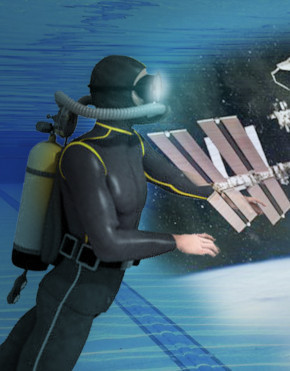
The Underwater VR for Astronaut Training project is designed to train astronauts for spacewalks. Previously, very deep and large pools were used for such complexes. The use of augmented reality reduces modern requirements for training pools without compromising the quality of the simulated space environment.
The project has developed a waterproof virtual reality headset, as well as tracking devices to determine location and orientation in space. In this project, six aquanauts spent sixteen days at a depth of 20 meters underwater, controlling activities using mobiPV mobile devices.
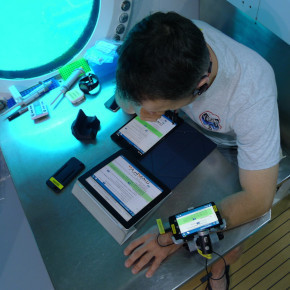
The photo shows Matthias Maurer from the European Astronaut Centre participating in NASA's NEEMO 21 underwater training mission. He is testing a wearable prototype of a mobile device (mobile procedure viewer, mobiPV) that provides access to audio and video instructions.
Mission Control Center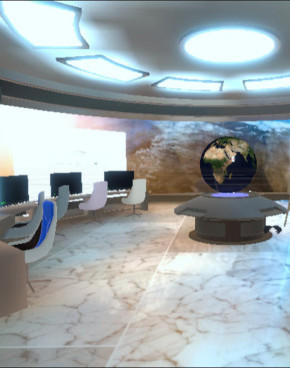
The Virtual Mission Control Room (VMCR) project aims to create virtual mission control rooms and technical maintenance centers for space technology.
Previously, such mission control rooms were rooms with rows of displays behind which experts sat. Nowadays, center employees do not need to be in the same room to work together. Colleagues at the virtual flight control center can:
- interact directly via correspondence, video, and audio communication;
- create shared task boards, notes, and documentation;
- create shared catalogs for photos and video clips of the flight.
The virtual flight control center allows for remote presence. Each expert has their own set of windows and data on their display. The application allows the user to perform three-dimensional modeling of spacecraft and planets: position, trajectory, and field of view. The application contains remote control instrument panels.
Virtual Mars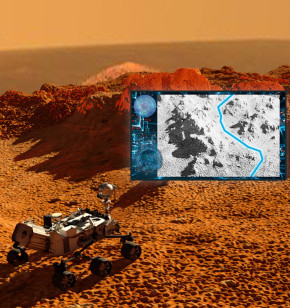
The Mars Xlab project aims to create virtual photorealistic views of the surface of Mars. Artificial intelligence is used to improve images obtained from Mars satellites and to obtain surface characteristics based on images obtained by Mars rovers.
The virtual laboratory recreates the Martian environment and allows astronauts and robots to explore it.
In Turin, astronauts train in the augmented reality laboratory to support the activities of the International Habitat Module (I-Hab) during space missions.
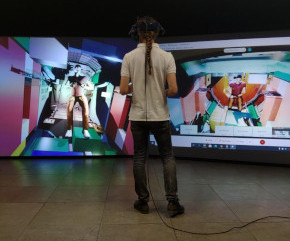
The photo shows ESA astronauts Alexander Gerst and Luca Parmitano training in virtual reality helmets.
Space technology maintenance
The Space Applications Services (X-aRm) project aims to create an exoskeleton designed for technical maintenance of spacecraft in open space. The astronaut's spacesuit is equipped with an X-aRm exoskeleton arm. Astronauts and engineers used an augmented reality interface to receive instructions and then repair and assemble equipment in space.
TelepresenceDigital Twins of Humans for Space Operations with XR telepresence project develops the idea of telepresence for remote work in space. The goal of the project is to develop immersive means of perceiving augmented and virtual reality. Communication and monitoring technology is used:
- in the design, assembly, integration, testing, and verification of spacecraft;
- in flight control.
An avatar — a digital image of a person in cyberspace — is created based on data collected about the human body. This is followed by a three-dimensional assessment of the person's posture.
Remote control of the light fieldThe project “Lightfield-enhanced immersive teleoperation system for space station and ground control” is aimed at decision-making and ensuring precise control of space technology. Intensive data processing and the transfer of the results of this processing to the control environment provide a more accurate overview of the observed area.
A light field is a digital representation of light rays passing through a certain volume of space. Computer technology calculates the rays based on images obtained by robotically controlled cameras. With sufficient image data, new viewing perspectives can be calculated for each point in the observed space. Light field data is fed into the augmented reality environment. The user has access to a 180° and 360° view with correct parallax, reflections, and shadows.
Example of application. The space station operator activates the image recording and data collection mode in the space of interest. To collect data, the operator uses the available sensors and cameras of space devices. Based on the collected data, the augmented reality environment forms a light field that can be sent to the flight control center. The control center analyzes the light field data and generates instructions for the space station astronauts. Space station operators use robotic space devices to perform the necessary actions.
Audiovisual communication in open spaceThe Audiovisual Feedback to Augmented Manual Activities During Space Walks project aims to fill the silence of space with virtual sounds.
Silence greatly hinders the activities of astronauts in open space. The project involves creating artificial sounds in the astronaut's headphones. For example, metal banging, drill whistling, engine humming, etc. The sounds confirm the result of the action and contribute to the natural and accurate completion of the task.
ConclusionAs you can see, the European Space Agency not only reads science fiction carefully, but also generates ideas for research projects for space missions. At the same time, the organization of identifying and implementing innovative ideas at the ESA (EU) differs from similar activities at NASA (USA).
- Home
- About Us
- Write For Us / Submit Content
- Advertising And Affiliates
- Feeds And Syndication
- Contact Us
- Login
- Privacy
All Rights Reserved. Copyright , Central Coast Communications, Inc.